How to Pull a Trigger
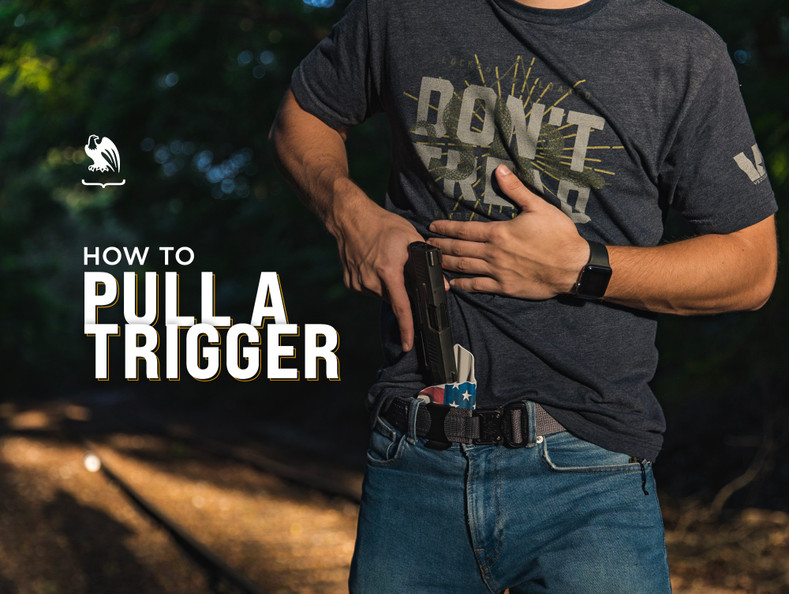
You may be wondering how it’s possible to have an entire article dedicated to the art of pulling a trigger. It seems pretty simple, right?
Well, there’s actually more to pulling a trigger than you might think. You have to think about exercising trigger discipline, proper finger placement, and even resetting the trigger after the fact. Learning how to pull a trigger is key to ensuring a safe, smooth, and accurate shot.
Before we get into the meat and potatoes of proper trigger pull techniques, let’s talk about the different types of triggers available.
Types of Pistol Triggers
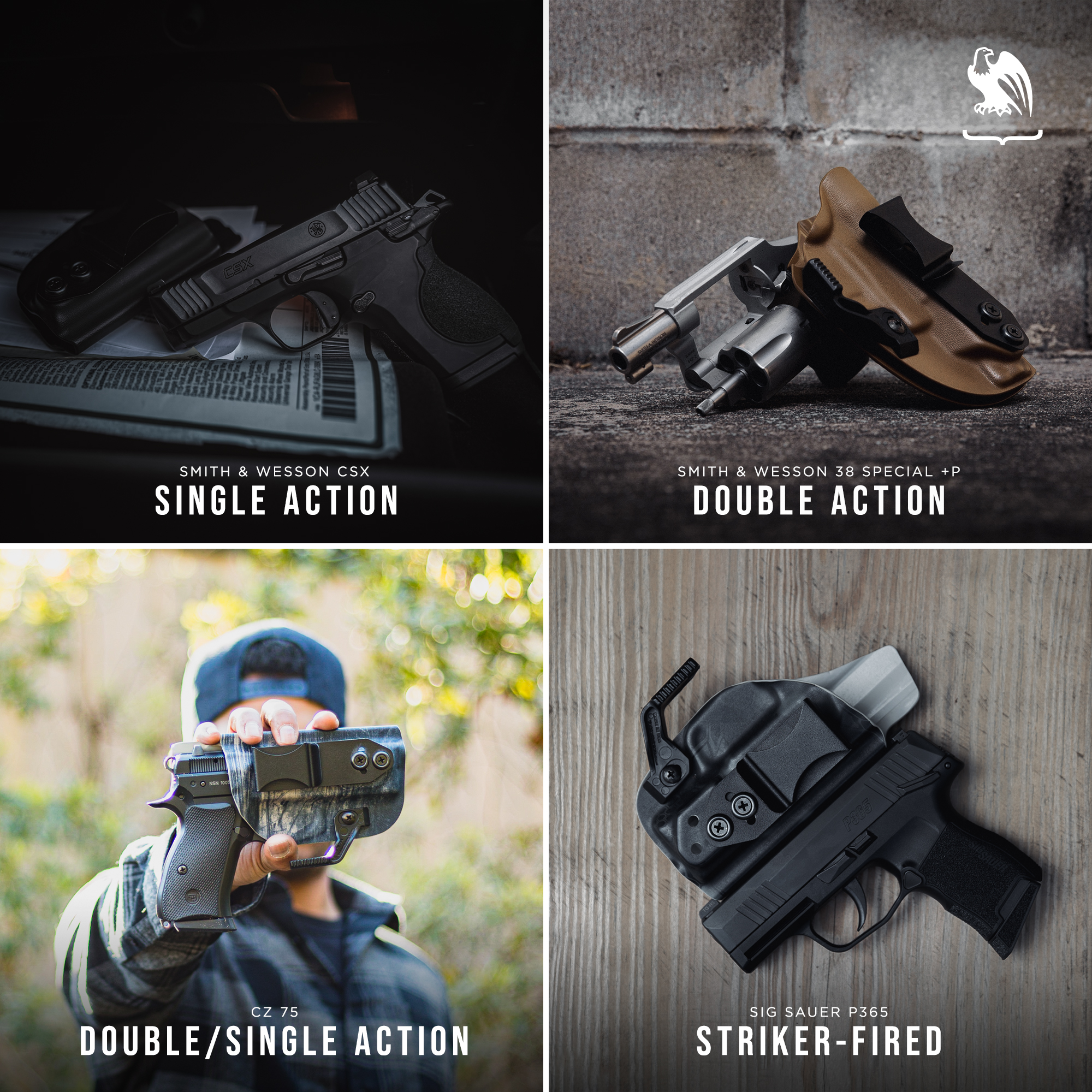
Before you can understand how to pull a trigger, you need to know how a trigger works and the different kinds that are available.
In a nutshell, a trigger is the mechanism that starts the process of firing a round. The exact way that works depends on the type of trigger.
There are four main types of triggers or “trigger actions”: single-action, double-action, double-action/single-action, and striker.
Let’s break it down.
Single-action triggers only perform one action when you pull the trigger — releasing the hammer. For a single-action trigger to work, you must first cock the hammer into position. Since the gun only performs one action to release the hammer, single-action firearms typically have a short, light trigger pull, making them fairly easy to fire.
Double-action triggers, on the other hand, perform two actions when you pull the trigger — cocking and releasing the hammer. Because of this, double-action guns have a heavier and longer trigger pull. Some people consider double-action triggers safer since it is harder to pull the trigger.
With a double/single-action trigger (DA/SA), the first pull of the trigger can be either double- or single-action. Due to the motion of the slide after the first pull, each subsequent shot is a single action. This type of gun trigger does require a little more focus since you have to shift from the full double-action pull into a single action.
The fourth trigger type, which has become increasingly popular over the last decade, is the striker-action (aka striker-fired). Rather than having a hammer, when the trigger is pressed, a striker bar is pulled that engages the firing pin. As a result, striker-fired pistols have a smooth, consistent trigger pull. Keep in mind these guns don’t have any external safeties, but many manufacturers have included internal safety features to prevent accidents.
Trigger Discipline
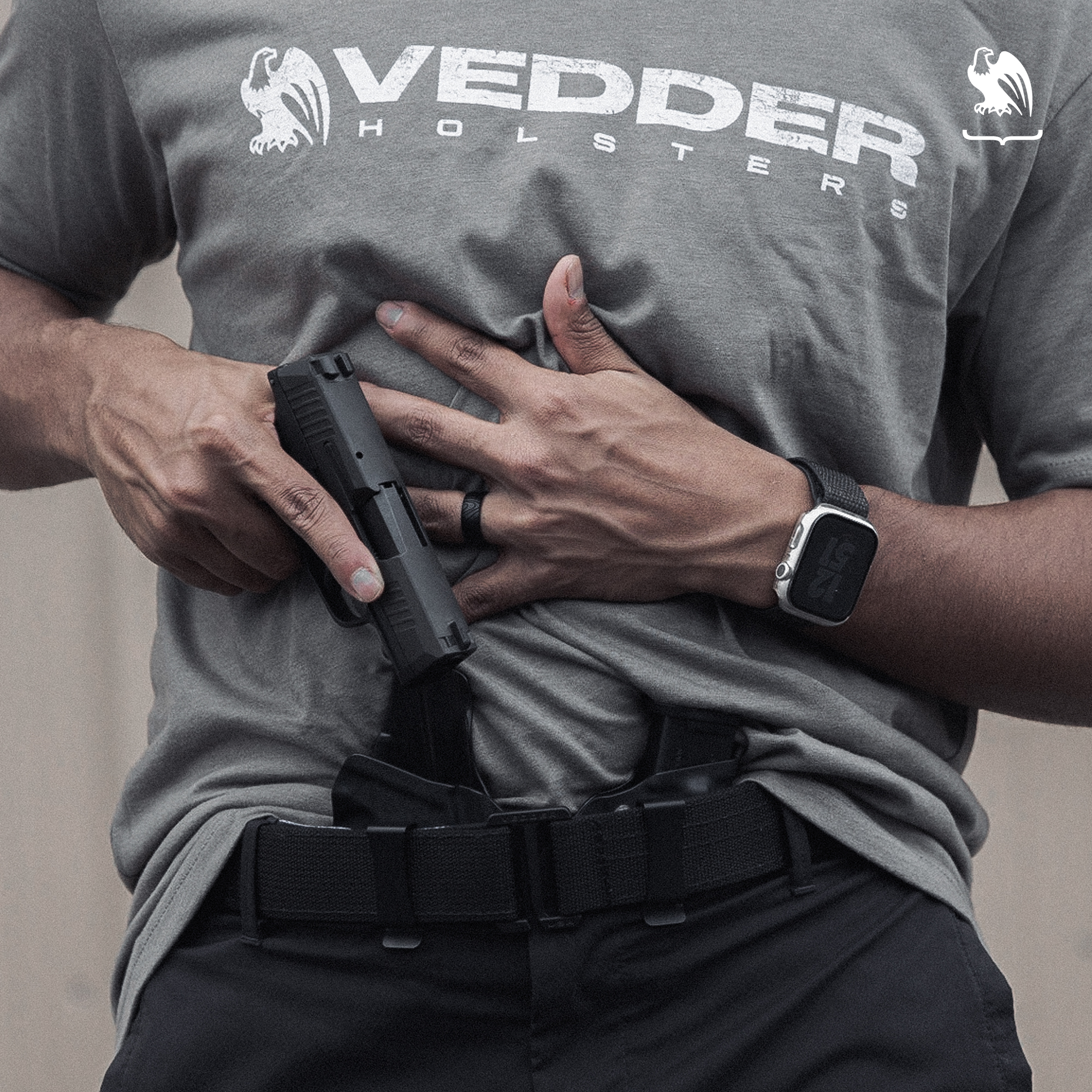
Before we talk about pulling a trigger, we need to address the importance of safety and trigger discipline.
Trigger discipline is one of the most important rules of gun safety. It requires you to deliberately keep your finger off the trigger until you are ready to shoot.
When you pick up a firearm, your first inclination might be to place your finger on or near the trigger. This is incredibly dangerous, as it raises the risk of an accidental discharge. And the results of that can be tragic.
So, where should you place your finger before you’re ready to shoot?
The simple answer is “outside of the trigger guard area.” Most people press their finger against the frame right above the trigger area, parallel with the barrel. That makes it easy to quickly move your finger onto the trigger when you’re ready to take a shot without risking an accidental trigger pull.
While it may take time before trigger discipline becomes automatic, it’s important to be mindful and practice this important safety rule before worrying too much about specific trigger pulling techniques.
Proper Trigger Finger Placement
Pulling a trigger seems pretty straightforward. After all, you only have to place your finger on the trigger and press, right?
Well, it’s actually a bit more complicated than that. In fact, proper trigger finger placement is key to a slow, smooth trigger pull, and in turn, a cleaner, more accurate shot.
The first thing to think about is finger placement. Most experts recommend using just the pad of your index finger to pull the trigger. This tends to give you more control and better accuracy than wrapping your finger around the gun trigger.
However, there are some shooters who prefer to squeeze the trigger with the indent of the first knuckle on their index finger. While not for everyone, some people find this method more comfortable.
Next time you are at the range or are dry fire practicing, utilize both methods of pressing the trigger to see which gives you the best results. At the end of the day, the best method depends on what is most comfortable and effective for each individual.
Trigger Reset
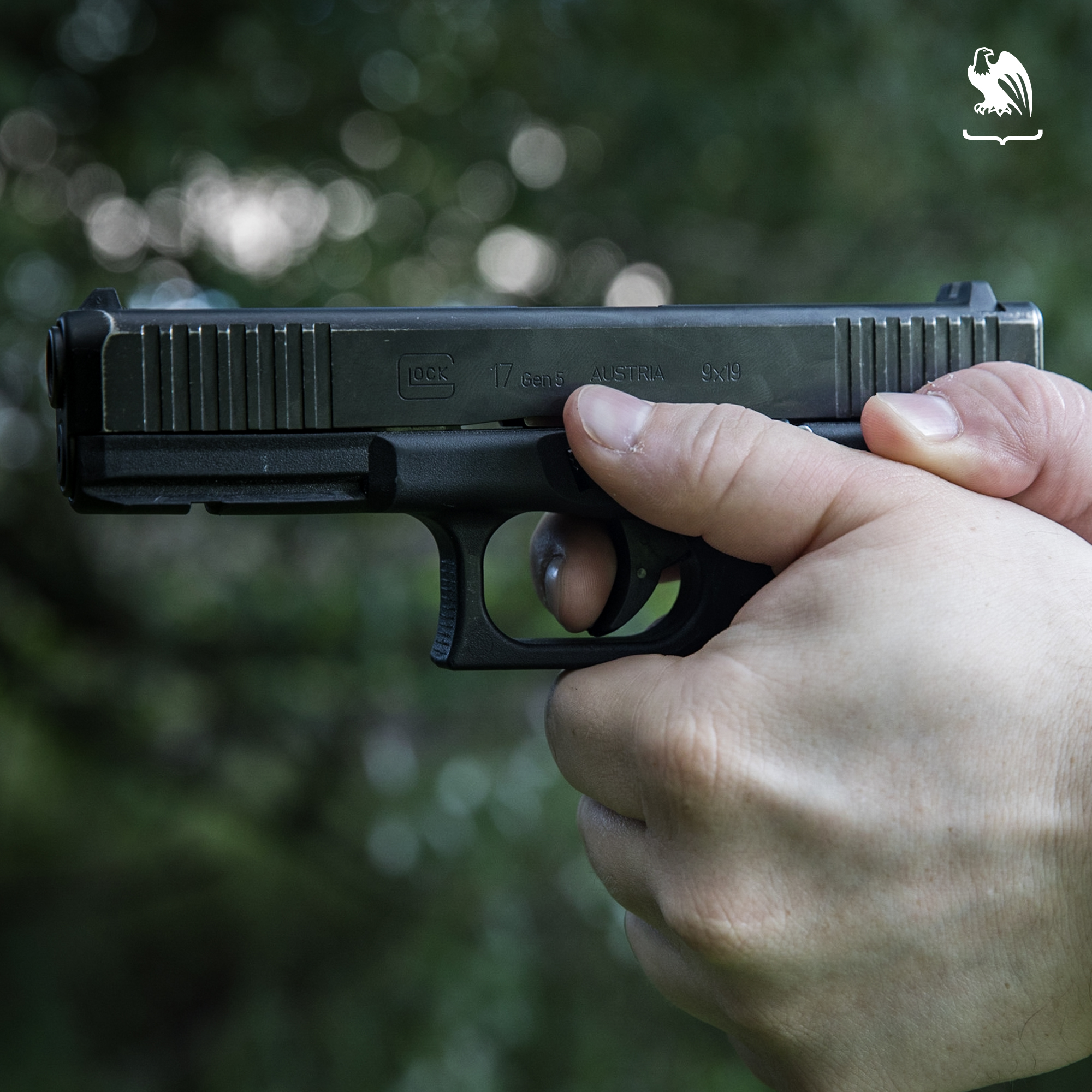
If you thought pulling a trigger ended with the squeeze that fired a round, you’d be wrong.
Trigger reset, or riding the reset, is the point after a shot where the trigger and the sear are re-engaged within the firing mechanism so you can shoot again. You should hear and feel an audible “click” as it resets.
The process is simple:
- After you’ve fired, don’t let go of the trigger. Hold it back until you’ve realigned your sites with the target.
- Once you’ve confirmed your sight picture, slowly relax your finger until you hear and feel the click indicating it has reset, and don’t let it go any farther.
- Take your next shot and repeat.
While not all firearms experts agree on this concept, the idea behind trigger reset is to improve speed and accuracy by making it so your finger doesn’t have to look for the trigger each time you take a shot. This also helps keep your weapon from moving around unnecessarily, which helps you keep your eye on the target.
Best Way To Pull the Trigger for an Accurate Shot
Many people, especially beginners, will hastily pull a trigger because they are anticipating the bang and recoil that occurs after the gun fires. This fast trigger pull can add movement to your barrel and firearm, causing your bullet to be off target.
The key is to move the gun as little as possible when pulling the trigger. Here are a few tips to help reduce movement and increase your accuracy:
- Slowly squeeze the trigger.
- Practice good follow-through; don’t let go of the trigger immediately.
- Let the trigger reset by slowly releasing it until you hear a click.
- Once you are ready, repeat these steps for your next shot.
If you are looking for more information on recoil management and follow-through, check out this video from Brownells.
Pistol Trigger Pull Exercises
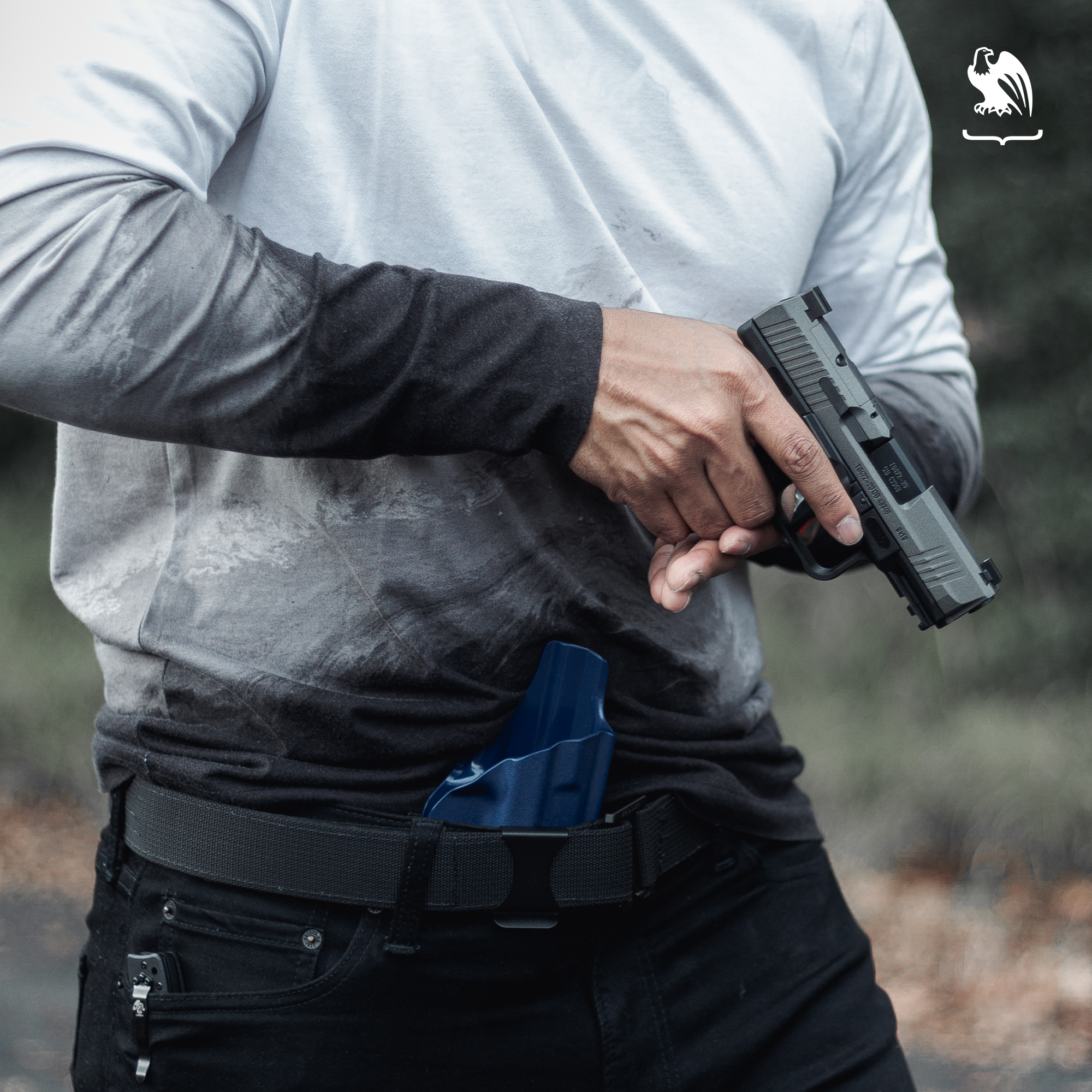
Before you decide to head to the range and put your newfound knowledge to the test, here are a few more techniques to try when learning how to pull a trigger.
Remember that becoming a good marksman takes time, practice, and patience. Dry firing is still a great way to practice and is both safe and practical. Always be mindful of your breathing. This may seem minute, but it’s a key aspect of gun trigger control.
Make sure to have a strong shooting stance; your feet should be shoulder-width apart with both hands on your handgun and a slight bend in your knees with your eyes facing forward. Being aware of these things can be pivotal in helping you smooth out your trigger press.
While dry fire practice is great to help you build muscle memory, live fire range practice is key as well to put your practice to the test and help you better compensate for recoil.
What Do I Do Now?
Now that you know the ins and outs of how to pull a trigger, it’s time to head to the range to practice what you have learned. Make sure to check out our Range Guide before putting your skills to the test so that you have everything you need for a successful range day.
If you’re looking for belts or holsters for a specific gun model, we recommend visiting our Holsters by Gun Model page. For all our belt and holster options and for more information to help you choose the carry system that works best for you, visit our Vedder Holsters website.
Looking for items beyond holsters and belts? Check out our Resources Page for popular product links like lights, lasers, first aid, maintenance, and more.
